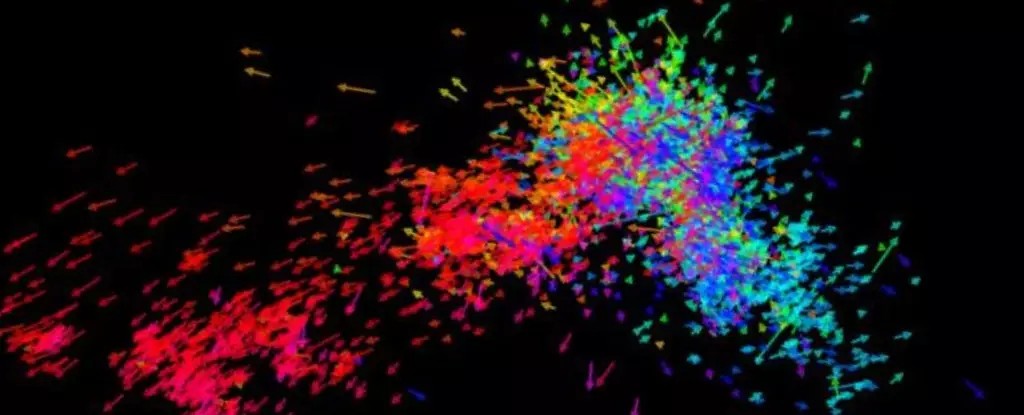For centuries, the Magellanic Clouds have captivated astronomers and stargazers alike. These irregular dwarf galaxies—distinguished as the Large Magellanic Cloud (LMC) and the Small Magellanic Cloud (SMC)—are not just mere celestial objects; they are vibrant ecosystems of young stars and dense gas regions. Their namesake, the renowned explorer Ferdinand Magellan, first documented them during his legendary 16th-century voyage. Located at distances of approximately 160,000 and 200,000 light-years from Earth, these celestial bodies are essential to our understanding of cosmic evolution. Yet, emerging research suggests that their dynamic existence is far more precarious than previously assumed.
The Cosmic Tug-of-War
Recent investigations led by esteemed researchers Satoya Nakano and Kengo Tachihara from Nagoya University reveal surprising signs that the SMC is under immense gravitational stress from its larger counterpart, the LMC. The gravitational influence of the Milky Way exacerbates this situation, providing an ongoing saga of cosmic interaction that could herald the demise of the SMC. This phenomenon, elegantly encapsulated in the phenomenon known as the Magellanic Stream—a trailing gas structure stretching across the southern skies—illustrates the complexities of galactic relationships and the relentless forces of nature that entwine these celestial siblings.
The researchers meticulously tracked the movements of around 7,000 massive stars within the SMC, which serves as remarkable markers for regions teeming with hydrogen. This endeavor unveiled a strikingly chaotic motion; stars were observed veering off in opposing directions—some toward the LMC while others sped away. This behavior offers stark evidence that the SMC is not merely drifting in the cosmos but is actively being torn apart by the gravitational forces generated by the LMC. Such findings challenge long-standing assumptions regarding stable galactic interaction and hint at a future where the SMC may cease to exist in its current form.
Unexpected Rotational Dynamics
Perhaps one of the most intriguing discoveries from this research is the startling lack of rotational symmetry among the massive stars in the SMC. In contrast to other galaxies like our own Milky Way—where stars and gas rotate in unison—the SMC’s stars exhibit a baffling independence. Conventional wisdom suggests that new, massive stars initially coalesce from rotating gas clouds, entering a phase of shared rotational dynamics before ultimately decoupling. However, the SMC seems to defy this paradigm, indicating that its gas is not maintaining any semblance of rotation.
This deviation is not merely a detail; it has profound implications for the theoretical models that describe galactic evolution. As Nakano emphasizes, this revelation may necessitate a reevaluation of calculations concerning the mass of the SMC and its gravitational interactions with the LMC and the Milky Way. It amplifies the complexity of the three-body problem in celestial mechanics and calls for a rethinking of how we conceptualize the evolution of galaxies, particularly those akin to primordial formations in the early universe.
A Portal to Understanding Cosmic Evolution
Exploring the delicate mechanics of the Magellanic Clouds allows researchers to untangle the narratives of star formation and galactic dynamics on a larger scale. The SMC, with its rich, primordial characteristics, serves as a key to scratching the surface of how galaxies were formed and subsequently shaped by their surroundings. Observational studies focusing on stellar motion in the SMC and its companion lend valuable insights into the intricate dance of cosmic evolution, providing critical data that informs our comprehension of the universe’s birth and transformation.
As we gaze at the Magellanic Clouds, we must acknowledge their potential as living laboratories where fundamental truths about cosmic interactions and galactic structure may unfold. The implications of Nakano and Tachihara’s discovery could extend beyond mere astronomy; they may fundamentally alter how we perceive the celestial tapestry that surrounds us. Far from being static entities in the cosmos, the Magellanic Clouds are embroiled in a dynamic struggle that mirrors the forces governing the universe itself.


Leave a Reply